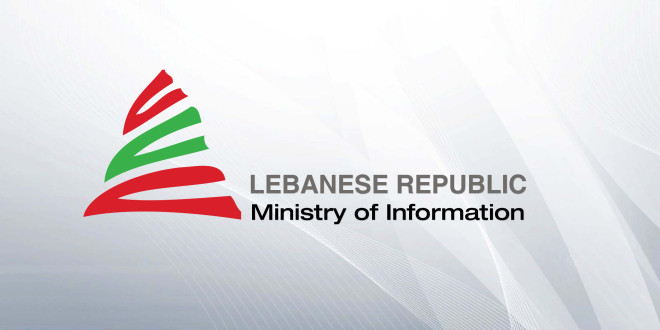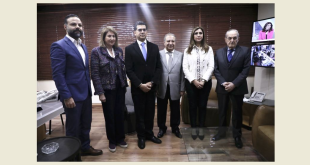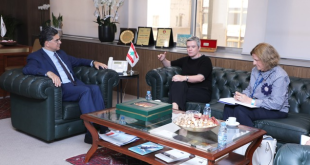The Lebanese Ministry of Information publishes on its website, as well as on the National News Agency’s website, its course of action within the government’s six-month stint.
The Ministry of Information has worked on a plethora of projects starting the day it gained confidence back on the 11th of February, 2020.
For this purpose, the Ministry has compiled a chart in Arabic, English, and French, which details the ministry’s most prominent projects. The chart also includes each project’s status, including its start date, end sate, anticipated completion date, progress, etc..
The chart also describes each of the projects and mentions partnering local or international organizations, if any.
Amongst MoI’s most prominent projects:
– Developing a strategic plan for the Ministry of Information based on a proposal by an ad-hoc committee comprising of academics, media, and legal professionals. According to the plan, a media regulatory body shall replace the Ministry of Information and the National Media Council.
The regulatory body, which enjoys decision-making and executive powers, will be in charge of organizing the public and private media sectors. The plan provides for the establishment of a single media platform titled “Liban Media”, which includes the National News Agency, Radio Lebanon, directorate of lebanese studies and publications and Tele Liban. The new media platform will perform its tasks independently and will keep pace with the most advanced digital platforms in today’s world. This is in addition to the establishment of a state office for communication affairs, which secures communication among the government, the people, and all the Lebanese ministries.
– Setting up a mechanism at the Ministry of Information to train university students and media professionals (internship) at the Ministry’s relevant directorates.
– Launching a series of awareness campaigns on the dangers of the novel Coronavirus in cooperation with the Army Command – Directorate of Orientation, UNICEF, WHO, and the Ministry of Public Health, as well as setting up a page on the Ministry of Information’s website to follow up on Coronavirus news “corona.ministryinfo.gov.lb”
– Combatting misinformation through the launch of a page through the National News Agency’s website to verify fake news: Factchecklebanon.nnaleb.gov.lb. This in addition to publishing a series of awareness videos with the hashtag “#correct your information” and training a team of editors and reporters from the National News Agency to verify fake news, in cooperation with Agence France-Presse (AFP). A forum was also held in the presence of local and international participants.
– Establishing the National Media Academy.
– Preserving the archives of Tele Liban, and all the Ministry of Information’s directorates, in cooperation and liaise with the French Institute for Audiovisual Archives (INA).
– Appointing Tele Liban’s Chairperson through a three-stage mechanism. The first and second screening processes have been completed and have resulted in 45 qualified candidates to conduct the oral interview, according to which the Minister of Information selects 3 names and submits them to the Council of Ministers.
– Amending the media law proposal and referring it to head of Administration and Justice Committee. Some of the most prominent modifications: Law unit (written, audiovisual, and electronic), removing the term media crimes and replace it with media acts, excluding special media-related verdicts from the criminal record, abolishing prison sentences for media professionals and replacing them with a financial penalty, and respecting the international human rights law and observing international standards for freedom of opinion and expression.
– Implementing the “Right to Information” law by assigning specialized information officers to answer questions and requests. The Ministry of Information is keen on publishing all texts and information that the public has the right to access.
– Establishing three departments at the Ministry of Information: the Informatics Department, the Electronic and Digital Media Department, and the Communication and Dialogue Department.
You can have access to the Ministry of Information’s projects and course of action by checking the following chart:
 Lebanese Ministry of Information
Lebanese Ministry of Information



